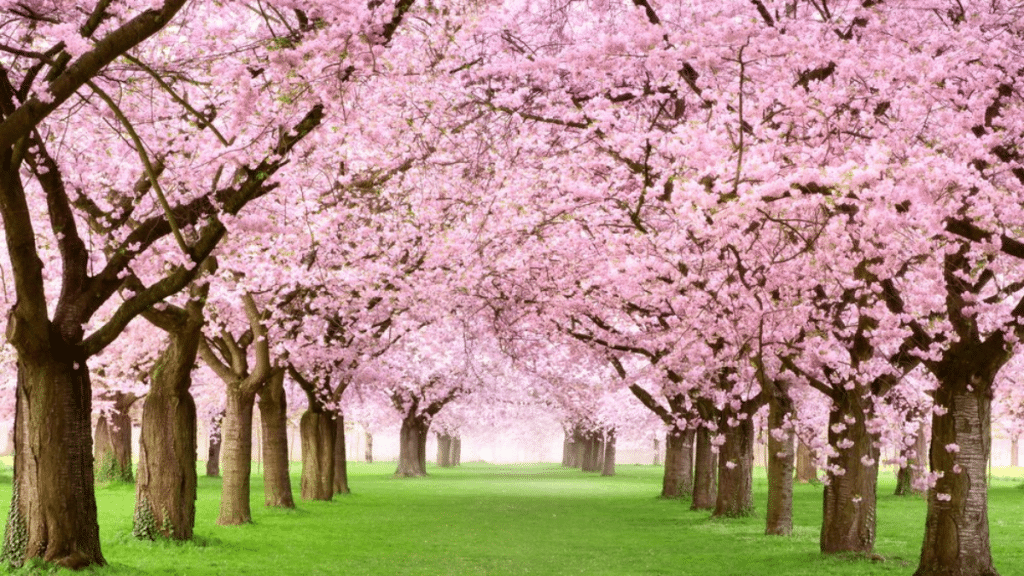When it comes to keeping your trees strong and healthy, tree care isn’t a once-a-year chore—it’s something that changes with the seasons. Just like your lawn or garden, trees need a little different TLC depending on the time of year. And if you’ve ever wondered what to do (and when), you’re not alone.
To help you out, we’ve put together a simple, season-by-season guide—straight from the perspective of an ISA Certified Arborist. These tips are easy to follow, even if you’ve never picked up a pair of pruning shears in your life.
Spring: Inspect, Prune, and Prepare for New Growth
Spring is when everything wakes up—including your trees. This is the perfect time to walk around your yard and take a close look. Are there any dead or cracked branches? Any signs of winter damage? Prune anything that looks broken or diseased to make way for fresh growth.
Keep an eye out for early signs of pests or fungal growth. A little attention now can prevent big problems later. Healthy trees in spring lead to strong trees all year.
Summer: Watch for Pests and Water Wisely
As the weather heats up, trees need extra hydration—especially younger ones. Watering deeply a couple of times a week is more effective than daily light watering. That encourages healthier, deeper root development.
Keep an eye out for insects, leaf discoloration, or unusual spots, which could be signs of stress or disease. And remember: don’t over-prune in summer. Trees need their leaves to stay cool and make energy. Less is more during hot months.
Fall: Feed, Mulch, and Clear Away Debris
Autumn is the ideal time to get your trees ready for colder months. This means clearing out fallen leaves and dead limbs, adding mulch to protect the roots, and giving trees a boost of nutrients with a slow-release fertilizer.
Adding 2–3 inches of mulch around the base helps lock in moisture and keep soil temps stable. Just be sure to keep it a few inches away from the trunk so it doesn’t trap moisture and cause rot. Think of fall care as tucking your trees in before a long nap.
Winter: Protect from Ice, Snow, and Cold Damage
Trees may look like they’re sleeping in winter, but they still need attention. If heavy snow builds up on branches, gently shake it off to prevent breakage. Ice can be tricky—don’t try to knock it off, as that can cause more harm than good.
This is also a great time to schedule pruning for certain trees, especially when they’re dormant. Without leaves, it’s easier to spot trouble spots, and the risk of spreading disease is lower. Smart winter care helps trees come back stronger in spring.
Why Seasonal Tree Care Matters for Long-Term Health
Caring for your trees throughout the year does more than just make them look nice—it helps them live longer, grow stronger, and stay safer. Consistent pruning helps prevent hazardous limb breakage. Monitoring for pests catches problems early. And mulching and watering the right way protects roots and supports healthy growth.
Trees are an investment, and with a little attention each season, they can add beauty, shade, and value to your property for decades.
When to Call a Certified Arborist for Expert Help
Sometimes it’s easy to handle seasonal tree care on your own—but not always. If you see signs of disease, have large branches near your home, or just aren’t sure what your tree needs, it’s time to call an expert.
An ISA Certified Arborist knows how to properly diagnose tree issues, recommend the right treatment, and prune safely without harming the tree. They also have the right tools and training to handle the tough stuff.
If you’re unsure where to turn, Nature’s Restore is a trusted name in tree care. They bring certified expertise and down-to-earth service—no pressure, just help when you need it.
Need a hand with your trees this season? Whether it’s pruning, inspecting, or protecting your trees, the team at Nature’s Restore is here to help. Give your trees the professional attention they need—and enjoy the confidence that comes with it.
